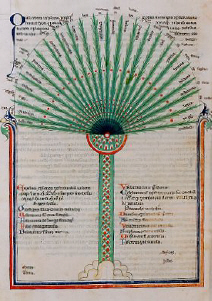Demeter’s origins as a grain goddess must lie in the Neolithic period with the advent of agriculture. Her name contains the Greek word for “mother,” but whether the initial syllable means “earth,” “grain,” or something else has long been debated. Homer had little interest in Demeter and none in her relationship with Kore (the Maiden), though Persephone appears in epic poetry as the bride of Hades. The queen of the dead (Attic Pherephatta) has a non-Greek name and must have been in origin a deity separate from Demeter’s daughter. Even after the two were firmly and inextricably identified, they were often paradoxically represented in cult as two distinct personages. Eleusinian iconography and terminology, for example, juxtaposed Thea, the underworld goddess, with Kore, the daughter. The Greeks avoided pronouncing or inscribing the ominous name Persephone in cult contexts, replacing it with Kore or other euphemisms, though such caution was less often exercised by the poets. Demeter and Kore were frequently worshiped together under such names as the Two Goddesses, the Thesmophoroi, or the Great Goddesses.
Demeter sanctuaries tended to be scattered in neighborhoods rather than centralized, probably because they were used for local celebrations of the Thesmophoria, Demeter’s main festival. In spite of their crucial role in the prosperity of the city, Demeter and Kore rarely functioned as civic gods. Exceptional were Thebes, where Demeter’s sanctuary occupied prime civic space on the Kadmeia, and certain cities of Sicily and Magna Graecia, where the two goddesses were dominant presences in the pantheon. In the Greek West, Kore/Persephone herself was sometimes the more prominent partner of the two, and played an important role in the social construction of marriage and the rites leading to adulthood for women and men. In keeping with Kore’s significance as the archetypal bride, the western colonies saw the core of the myth as the theogamy of Persephone/Kore and Hades, rather than the reunion of Demeter and Kore after the latter’s abduction, which was the focus of the famous Eleusinian Mysteries.
